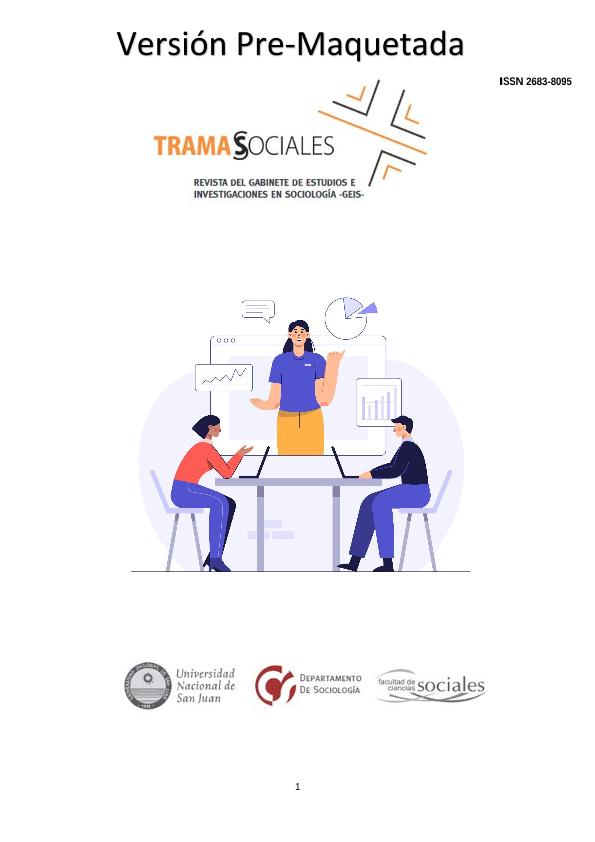Artículo
En las elecciones nacionales de noviembre de 2015, la coalición Cambiemos, integrada por la Unión Cívica Radical, la Coalición Cívica y Propuesta Republicana, se impuso a Daniel Scioli, el candidato representante del kirchnerismo. Para muchos analistas, fue sin duda sorpresivo que una fuerza de centroderecha, que solo gobernaba en dos distritos importantes, hubiera logrado conquistar el poder. En la coyuntura electoral, fue fundamental que la UCR como partido nacional le proporcionara al PRO una estructura territorial para favorecer dicho triunfo. ¿Cómo entender la alianza entre la UCR y el partido de Mauricio Macri cuando, en los años anteriores, diferentes líderes partidarios habían manifestado su rechazo al PRO y a la posibilidad de que el radicalismo apoyara a un partido de derecha? Para comprender el proceso que posibilitó la conformación de Cambiemos, en este trabajo se indaga, por un lado, sobre los cambios y reconfiguraciones internas del partido y, por el otro, sobre el modo en que el proceso de polarización política afectó la dinámica interna del radicalismo, particularmente luego del conflicto agrario de 2008. Retomando estas dimensiones nos preguntamos: ¿qué transformaciones internas atravesó la UCR en los primeros años del kirchnerismo y con qué claves discursivas se posicionó frente al gobierno? ¿De qué manera el creciente marco de polarización política afectó la reorganización partidaria interna y contribuyó a la formación de la coalición Cambiemos? In the national elections of November 2015, the Cambiemos coalition, made up of the Radical Civic Union, the Civic Coalition and the Republican Proposal, prevailed over Daniel Scioli, the representative candidate of Kirchnerism. For many analysts, it was undoubtedly surprising that a center-right force, ruling only two major districts, had managed to seize power. At the electoral juncture, it was essential that the UCR as a national party provide the PRO with a territorial structure. How to understand the alliance between the UCR and Mauricio Macri's party when, in previous years, different party leaders had expressed their rejection of the PRO and the possibility that radicalism supported a right-wing party? In order to understand the process that made possible the formation of Cambiemos, this work investigates, on the one hand, the changes and internal reconfigurations of the party and, on the other, the way in which the process of political polarization affected the internal dynamics of the UCR party, particularly after the agrarian conflict of 2008. Returning to these dimensions, we ask ourselves: what internal transformations did the UCR go through in the early years of Kirchnerism and with what discursive keys did it position itself against the government? How did the growing framework of political polarization affect internal party reorganization and contribute to the formation of the Cambiemos coalition?
Las transformaciones recientes en la Unión Cívica Radical: Renovación partidaria, polarización política y oposición al kirchnerismo (2008-2015)
Título:
Recent transformations in the Radical Civic Union: Party renovation, political polarization and opposition to kirchnerism (2008-2015)
Fecha de publicación:
09/2020
Editorial:
Gabinete de Estudios e Investigaciones en Sociología
Revista:
Tramas Sociales
ISSN:
2683-8095
Idioma:
Inglés
Tipo de recurso:
Artículo publicado
Clasificación temática:
Resumen
Palabras clave:
UCR
,
POLARIZACIÓN
,
kIRCHENRISMO
,
RADICAL
Archivos asociados
Licencia
Identificadores
Colecciones
Articulos(CEIL)
Articulos de CENTRO DE ESTUDIOS E INVESTIGACIONES LABORALES
Articulos de CENTRO DE ESTUDIOS E INVESTIGACIONES LABORALES
Articulos(IHUCSO LITORAL)
Articulos de INSTITUTO DE HUMANIDADES Y CIENCIAS SOCIALES DEL LITORAL
Articulos de INSTITUTO DE HUMANIDADES Y CIENCIAS SOCIALES DEL LITORAL
Citación
Obradovich, Gabriel; Donatello, Luis Miguel; Las transformaciones recientes en la Unión Cívica Radical: Renovación partidaria, polarización política y oposición al kirchnerismo (2008-2015); Gabinete de Estudios e Investigaciones en Sociología; Tramas Sociales; 3; 3; 9-2020; 165-191
Compartir




